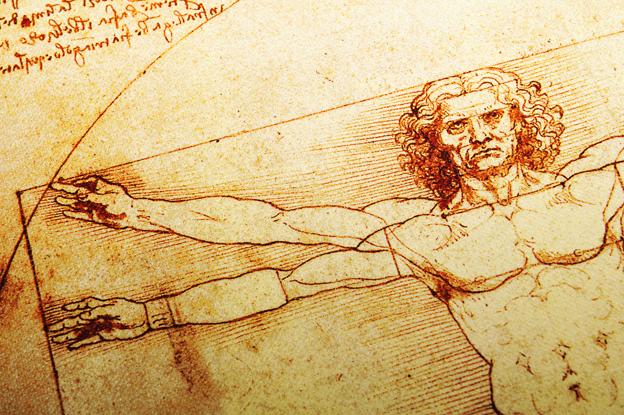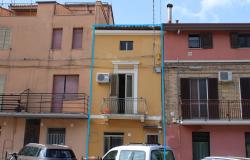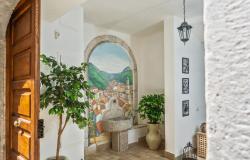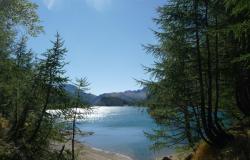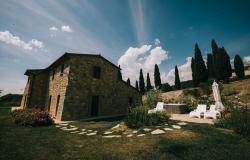In our fourth article dedicated to the Italian Renaissance, John Bensalhia describes the most important advances in science. (Read Part 1 - Introduction and Overview here; Part 2 - Philosophy here; Part 3 - Literature here.)
NATURE'S WAY?
The realm of science in the Renaissance is a curious one. It's arguable that two schools of thought comment on whether science was a key part of the Renaissance. The two separate arguments revolve around the ethos of the Humanist movement and how it related to scientific theories and principles.
In the early days of the Renaissance, it's debatable whether science squared with the Humanist principles of thinking for yourself, self-expression and challenging established theories. There was a greater emphasis on emotional expression and not always taking established facts as gospel. In addition, science tended to take a back seat to the favoured areas of literature, politics, debates and history. The classical sectors were arguably the more dominant areas in the establishing years of the Renaissance.
The other side of this argument however, is that this resurgence in books and texts meant that more scientific pieces were being located, especially in the wake of the Fall of Constantinople in 1453. Greater access to books and texts meant that there was greater opportunity of learning about sectors such as science. It's also worth noting that after the Fall of Constantinople, a number of Byzantine scholars came to Italy, among their number were writers, scientists and astronomers. They brought with them a wealth of knowledge that could be taught and shared.
TEACHING
The teaching of science and science-related areas such as astronomy and anatomy was to become highly popular. The Italian universities not only recruited well-regarded Italian academia such as Giovanni Bianchini (Professor of Astronomy at the University of Ferrara), they also recruited teachers and experts from other countries.
One such example was a friend of Bianchini's, Georg von Peuerbach, an Austrian astronomer. Originally, Peuerbach had enrolled at the University of Vienna in 1446, and then went on to teach at Bologna and Padua. One of Peuerbach's students was German-born Regiomontanus, who came to Italy to study in the 1460s. In fact, the notes on Peuerbach's lectures were ultimately published as Theoricae Novae Planetarium in the 1470s. This publication presented Ptolemy's theories on astronomy in a readily available and accessible fashion.
One professor at the University of Padua was Andreas Vesalius, who also lectured at Pisa and Bologna. Vesalius encouraged a new method in the study of human anatomy, which was a radical departure from previously established medieval practices.
BODY OF WORK
 The Renaissance encouraged a closer look at the way in which the human body worked. The likes of Vesalius would encourage dissection as a way of studying human anatomy. It was thought that this would be a greater learning tool as opposed to relying on established notions. For example, it was discovered that instead of comprising two bones, the human jawbone only had one. Indeed, it's said that bodies would mysteriously disappear from the gallows in order to be dissected for study.
The Renaissance encouraged a closer look at the way in which the human body worked. The likes of Vesalius would encourage dissection as a way of studying human anatomy. It was thought that this would be a greater learning tool as opposed to relying on established notions. For example, it was discovered that instead of comprising two bones, the human jawbone only had one. Indeed, it's said that bodies would mysteriously disappear from the gallows in order to be dissected for study.
One such advocate of this approach was actually Leonardo Da Vinci. Among his other scientific accomplishments (see later in the article) was a greater understanding of human anatomy, which would form a key part of some of his works of art. Formally trained in anatomy (he trained with Andrea del Verrocchio), his research would take him to the hospitals in areas such as Rome and Milan where he would dissect dead bodies. This would form a greater understanding of the human body and the skeleton. For example, some of his drawings look closely at the skeletal and muscular aspects of the body, in addition to depictions of the vascular system and internal organs. Leonardo would also study the ageing process in humans, the emotional effects of the human body, and also comparisons of the human body and structure to those of animals.
As the Renaissance spread across other countries, other men in the scientific world established themselves. One such example was Swiss German astrologer, alchemist and physician Paracelsus. Paracelsus took more of a proactive approach to medicine, using natural influences and practices as opposed to books. Paracelsus was unique in that he used chemicals and minerals in his researches, being of the opinion that the universe was one whole entity – so that even if a person was affected by poison or chemicals, then the use of chemicals or minerals as an antidote would balance out the damage. He also regarded alchemy as a means of medicinal research as opposed to the more conventional use of alchemy which was to turn base metal into gold.
THE DA VINCI CODES
One other Renaissance man to also study alchemy was Leonardo Da Vinci, who would mix different metals to research pigments for his paints. However, it is said that Da Vinci had less interest in seeing whether metal could become gold or hold some sort of remedy for living forever.
Although we tend to connect Da Vinci with artwork, he also achieved a great deal in the fields of science and engineering.

It's only now that we tend to regard Da Vinci as a notable contributor to science. At the time of The Renaissance, his lack of formal training in Latin or mathematics meant that he wasn't recognised in his time. He also differed from other scientists in that he used his research to contribute to his artwork. As someone who made copious notes and studied the fields of science with a great intensity, these labours were put to good use in his legendary works of art. Apart from studying human anatomy, Da Vinci studied light techniques, which proved useful when creating more realistic portrayals of light and shade (such as the shadowy contrasts in 1483's Lady With An Ermine).
Da Vinci would also study botany and geology with great dedication. For botany, Da Vinci would examine different species of plants and flowers such as irises and wild violets. He would also study in detail mountains and landscapes – the two Virgin Of The Rocks works showcase this intricate attention to detail, as seen in the detailed plant and cavern depictions.
Leonardo Da Vinci was also a big player in the field of engineering. He was hired as an engineer in Venice in 1499, with part of the work being dedicated to invent moveable barricades that would act as protection from any attacks. His design for a single span 720 foot bridge was never used by Ottoman Sultan Beyazid II of Constantinople, but it was ultimately used as the blueprint for a bridge built in Norway in 2001. The many notes, diagrams and blueprints include plans for the flying machine, whether it's ideas on ornithopters or a machine with a helical rotor. Already looking at ways for man to fly? Truly, a man ahead of his time.
SEEING STARS
 Astrology was also referenced in The Renaissance. A main element of the Renaissance was to challenge previously held beliefs and facts, and in the astrology world, Nicolaus Copernicus, a Polish born Humanist and astronomer challenged the notion expressed by Claudius Ptolemy that the Earth was the centre of the universe.
Astrology was also referenced in The Renaissance. A main element of the Renaissance was to challenge previously held beliefs and facts, and in the astrology world, Nicolaus Copernicus, a Polish born Humanist and astronomer challenged the notion expressed by Claudius Ptolemy that the Earth was the centre of the universe.
Copernicus had come to Italy to stay for a number of years between 1496 and 1501. During this time, he studied astronomy, and while learning about this field, he mused on Ptolemy's theories on moon motion. For Copernicus, this didn't quite square, and so, he researched this subject, reading the likes of Plato, Cicero and Pythagoras. However, it was during his return to Italy between 1501 and 1503, as a student at the University of Padua, that his main theory came to him with regards to what was at the centre of the universe. Instead of the Earth, Copernicus asserted that the sun was at the centre of the universe. This was expanded on in his publication De Revolutionibus orbium coelestium, which also asserted that all spheres revolve around the sun and that the centre of the earth is “only of gravity and of the lunar sphere”.
However, Ptolemy's theories were also made widely available in the form of Epitome Of The Almagest, which was worked on by Regiomontanus, who finished his teacher, Peuerbach's work on the summaries of Ptolemy's Almagest.
It's also worth noting that in the latter era of the Italian Renaissance, a legendary figure in the field of astronomy was born. Galileo would not only produce his own ideas on the workings of motion and prove the truth of Copernican's system of heliocentrism, he would also invent the telescope.
